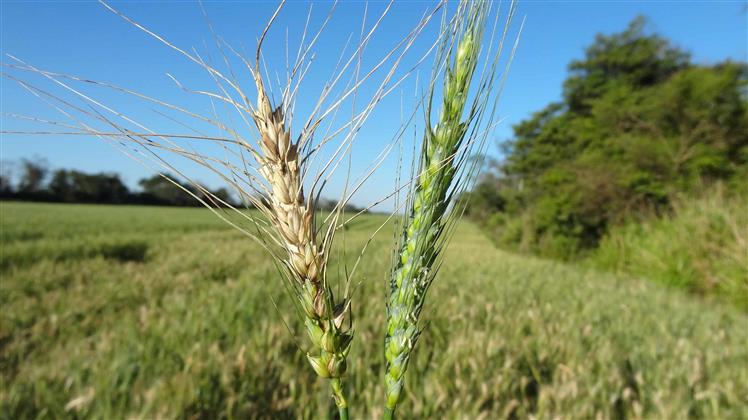The wheat smut fungus was first identified in Brazil in 1985 and gradually spread to neighboring countries. More recently, pandemics have occurred in Bangladesh and Zambia.
In Bangladesh, it destroyed around 15,000 hectares in 2016, spreading to more than 16% of the country’s wheat-growing area and consuming up to 100% of crops, while outbreaks of varying severity have continued to occur in Zambia since its arrival in 2018.
Scientists fear the fungus could spread to other countries by importing infected seeds or by spores traveling with the wind.
The wheat blast has already spread from eight to 21 districts in Bangladesh, and scientists are particularly worried it will spread to China and India, the world’s two biggest wheat producers.
In a new study, an international team of scientists led by University College London and Sainsbury Laboratory, East Anglia, confirmed that the fungus afflicting Bangladesh and Zambia – Magnaporthe oryzae – is of the same genetic lineage as that found in South America if the exact source could not be identified either.
The authors wrote: “The occurrence of wheat explosions on three continents with climatic conditions highly conducive to their propagation is unprecedented and poses a very significant threat to global food security, posed by the twin challenges of climate change and armed conflict in major agricultural regions will be exacerbated.”
They said the global community must learn lessons from the Covid-19 pandemic and track the spread of the fungus using similar genetic surveillance methods used to track the spread and mutations of the coronavirus.
The scientists, who published their work in the journal PLOS Biology, analyzed the genetic makeup of wheat blight using 84 simultaneous PCR tests.
Aside from tracking its international spread, the team found that the Rmg8 gene is resistant to the fungus, while the disease is sensitive to the fungicide strobilurin.
They emphasized that genomic surveillance, especially in countries neighboring infected areas, is the best way to understand how to control the spread of fungi.
Professor Nick Talbot of the Sainsbury Laboratory said: “Only by truly understanding the enemy and understanding the pathogens that cause these diseases will we be able to truly control them pre-emptively.
“We need to anticipate and be prepared for plant diseases to spread globally as a result of the effects of climate change and globalization.
“We need to be proactive rather than reactive, we need to anticipate that diseases are shifting and therefore plan accordingly.”
The researchers said more work is needed to understand how plant diseases such as wheat blast fungus can evolve to become resistant to pesticides and fungicides, and to explore other potential strategies as alternatives to chemical use.
Professor Sophien Kamoun of the Sainsbury Laboratory said: “This project builds on the paradigm – best exemplified by the Covid-19 pandemic – that genomic surveillance adds a unique dimension to the coordinated response to infectious disease outbreaks.
“We must remain vigilant and continue genomic monitoring of the wheat explosion in Africa and Asia to identify variants of concern as they emerge.”
pll/jha/lpn










